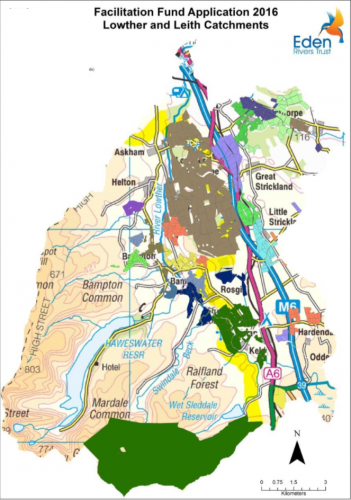Ref: CSFF020003
Lead: Alice, alice@edenrt.org.uk
Group members: 13
Length of agreement: 5
Area of group (Hectares): 5300
The target area is the Lowther and Leith sub-catchments of the Eden Valley. These are contiguous catchments with shared head waters and significant, shared land owners and tenants. The River Leith straddles the Eden Valley and Orton Fells NCAs while the Lowther is situated in the Cumbria High Fells NCA.
Priority habitats which occur in these catchments include upland heathland, upland flushes, fens and swamps, upland species rich hay meadows, upland calcareous grassland, ancient and native woodland, floodplain grazing marsh and meadows, wood pasture and parkland with veteran trees, riparian habitat associated with priority rivers and lakes, lowland raised bogs and arable field margins.
Priority species which occur within these catchments include freshwater species such as the white-clawed crayfish, breeding waders and woodland birds.
The members of the group will deliver CS priorities by:
- Enhancing riparian margins to improve habitat diversity and connectivity along both SSSI/SAC rivers to benefit biodiversity, water quality and flood risk management.
- Encouraging re-connection of the river to its flood plain through removing embankments and hard engineering and restoring meanders.
- Restoring sections of the Rivers Lowther and Leith to improve the geomorphology, habitat and biodiversity.
- Creating buffer strips, settlement ponds and new wetlands in these river valleys to intercept surface run-off, reduce sediment load in the rivers, increase water storage capacity and benefit biodiversity, landscape character, water quality and flood risk.
- Cooperating across adjacent land holdings to reduce habitat fragmentation and increase connectivity for priority species.
- Investigating as a group Natural Flood Risk management techniques, particularly around the communities at risk of flooding – Bomby and Bampton Grange.
- Using the Wild Pollinator and Farm Wildlife package to benefit wild pollinators, farmland birds and other farm wildlife… and more.

